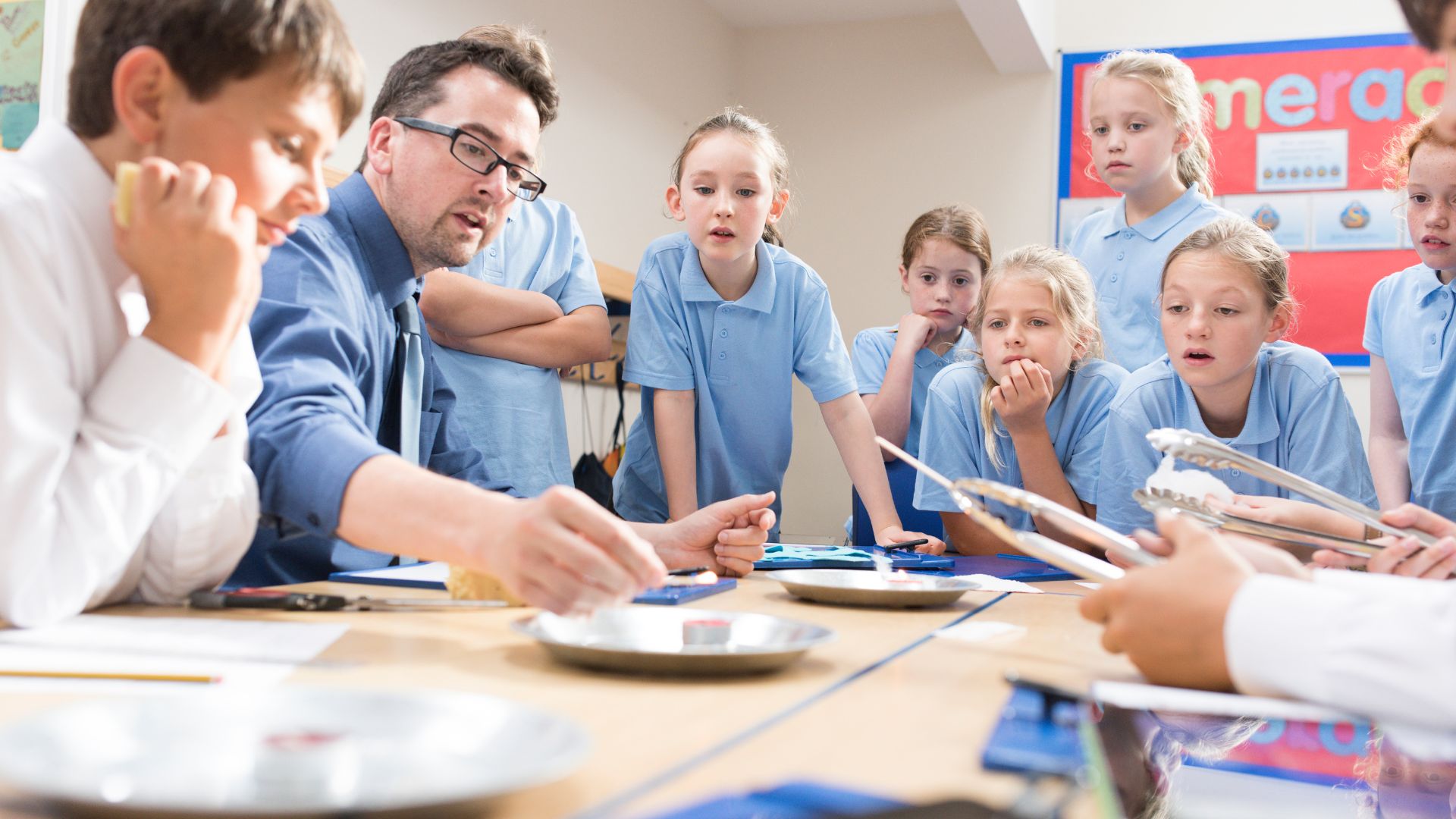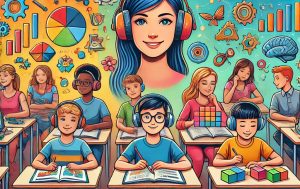Inclusive education has increasingly become a focal point for schools, educators, and policy-makers around the world. Driven by a commitment to equality and diversity, inclusive classrooms prioritize the needs of students with a range of abilities, including those with learning disabilities, physical impairments, emotional challenges, and gifted talents. By creating a welcoming environment that fosters belonging, engagement, and accessibility, educators can transform the learning experience for all students.
This article explores practical strategies teachers can use to build a classroom where each student feels valued and supported. Through approaches such as differentiated instruction, collaborative learning, and social-emotional support, teachers can meet the diverse needs of their students, paving the way for inclusive learning that benefits everyone.
1. Understanding the Principles of Inclusive Education
At the heart of inclusive education is the principle that all students, regardless of their backgrounds, abilities, or needs, deserve equal opportunities to learn. This approach is not only about providing access but also about ensuring that each student feels they belong. Inclusive education emphasizes:
- Equity over equality: While equality means giving each student the same resources, equity means providing resources based on individual needs.
- Accessibility: The learning environment should be physically, emotionally, and academically accessible to all students.
- Collaboration and community: Inclusion thrives in a setting where students work together and help each other learn, promoting mutual respect and understanding.
Creating inclusive classrooms is a collaborative effort that involves teachers, students, parents, and the broader school community.
2. Differentiated Instruction: Tailoring Learning for Diverse Needs
Differentiated instruction allows teachers to adjust content, processes, and products to meet the diverse needs of their students. Here’s how it works:
a. Adapting Content
Teachers can modify what is taught based on students’ abilities. For example, in a history class, students with different reading levels might access texts with varying complexity. Additionally, teachers can use multimedia resources—such as videos, images, and interactive websites—to present information in ways that accommodate various learning styles.
b. Varying Processes
Students differ not only in what they learn best but also in how they learn. Offering choices in learning activities allows students to engage in ways that resonate with them. For instance, some students may benefit from working alone, while others excel in group activities. This flexibility can help students build self-confidence and a stronger connection to the material.
c. Customizing Products
Encouraging students to demonstrate their learning in different ways can foster inclusivity. Instead of a one-size-fits-all assignment, teachers might offer a range of options, such as writing an essay, creating a presentation, or developing a model. By giving students control over how they show what they’ve learned, teachers acknowledge individual strengths and allow students to succeed on their terms.
3. Promoting Collaborative Learning
Collaborative learning can transform the dynamics of a classroom, creating a culture of shared knowledge and mutual support. Working in small groups or pairs encourages students to help one another, benefiting both students who provide help and those who receive it.
a. Grouping Strategies
When forming groups, it’s essential to consider the strengths and needs of each student. By mixing students of different abilities, teachers can create opportunities for peer learning, where students assist each other in problem-solving and completing tasks. Group work also allows students to practice essential skills like communication, teamwork, and empathy.
b. Structured Cooperative Learning
Implementing structured cooperative learning activities, such as “jigsaw” exercises, promotes interdependence within groups. In a jigsaw activity, each group member is responsible for learning a specific portion of the material and teaching it to the rest of the group. This approach allows students to rely on one another, emphasizing each student’s value in the group’s success.
4. Emphasizing Social-Emotional Learning (SEL)
Inclusive education isn’t limited to academic needs; it also focuses on emotional well-being. Social-emotional learning (SEL) equips students with skills to manage emotions, build healthy relationships, and make responsible decisions. SEL can be seamlessly integrated into the curriculum to foster a positive classroom environment.
a. Building Emotional Awareness and Regulation
Encouraging students to recognize and manage their emotions can have a profound impact on their learning and social interactions. Activities such as journaling, mindfulness exercises, or discussions about feelings can help students better understand their emotions and responses. Teachers can also model calm, constructive responses to stressful situations, showing students how to handle challenges effectively.
b. Fostering Empathy and Respect
An inclusive classroom is one where all students feel respected and valued. Teachers can build empathy among students through activities that promote perspective-taking, such as role-playing or discussions about diversity and inclusion. Encouraging students to appreciate each other’s differences creates a classroom culture rooted in acceptance and understanding.
c. Providing Supportive Feedback
Constructive feedback can greatly influence a student’s self-confidence and motivation. By focusing on effort and improvement, rather than only the final result, teachers can encourage students to persevere through challenges. Acknowledging small successes and areas for growth can inspire students to continue working toward their goals.
5. Utilizing Universal Design for Learning (UDL)
Universal Design for Learning (UDL) is an approach that seeks to create a flexible learning environment by providing multiple means of engagement, representation, and expression. This framework is particularly beneficial in inclusive classrooms, as it considers the varied ways students process and demonstrate knowledge.
a. Multiple Means of Engagement
UDL encourages teachers to provide choices in how students engage with material. For example, offering options like interactive digital resources, hands-on experiments, or group discussions allows students to choose the methods that resonate with them. These options can boost motivation and help students feel more connected to their learning.
b. Multiple Means of Representation
Not all students absorb information in the same way. Some learn best through auditory methods, while others prefer visuals or hands-on activities. By using diverse teaching materials—including text, video, diagrams, and models—teachers can ensure that all students have access to the content.
c. Multiple Means of Expression
Students vary widely in how they best demonstrate their understanding. In addition to traditional tests or essays, teachers can allow students to show their learning through creative outlets, such as art projects, performances, or multimedia presentations. This flexibility acknowledges diverse strengths and creates a sense of achievement among all students.
6. Creating a Physically Accessible Environment
For a classroom to be truly inclusive, it must be physically accessible to all students. This involves considering the layout of the classroom, ensuring that students with mobility challenges can navigate the space comfortably, and providing any necessary tools or technology to facilitate learning.
a. Flexible Seating Arrangements
Having a variety of seating options—such as desks, bean bags, or standing desks—allows students to choose the setup that suits their needs. This can be particularly helpful for students with sensory processing challenges or physical disabilities.
b. Assistive Technology
Assistive technology can be transformative for students with disabilities. For instance, speech-to-text software helps students with dyslexia or other reading challenges to express themselves, while adjustable desks and hearing aids ensure that students with physical or auditory impairments can participate fully.
c. Visual and Auditory Aids
Classroom design can support various sensory needs through the use of visual schedules, quiet zones, or noise-canceling headphones. Visual aids help reinforce instructions, while quiet zones offer a retreat for students who may need a break from sensory stimulation.
7. Building a Culture of Inclusivity
Beyond specific strategies, the most impactful element of an inclusive classroom is a culture of acceptance, respect, and encouragement. Teachers play a pivotal role in fostering this culture by setting expectations and modeling inclusive behavior.
a. Setting Clear Expectations for Inclusivity
Setting clear guidelines about respect and kindness toward others can help establish a positive classroom culture. Students should understand the importance of valuing their classmates and accepting differences. Teachers can communicate these expectations explicitly and reinforce them throughout the year.
b. Celebrating Individual Strengths
Acknowledge and celebrate each student’s unique strengths and contributions. Recognizing accomplishments, whether big or small, helps students feel valued and reinforces a sense of belonging. By celebrating diversity, teachers show students that everyone has something valuable to offer.
c. Involving Families and the Community
Engaging parents and caregivers in the classroom experience can provide additional support for inclusive education. Encouraging families to participate in school activities, share insights about their child’s learning needs, or volunteer in the classroom fosters a sense of community and helps build stronger connections between home and school.
Conclusion
Inclusive education reimagines the classroom as a place where all students can learn, grow, and feel respected. By embracing differentiated instruction, fostering collaboration, prioritizing social-emotional learning, and creating a physically accessible environment, teachers can provide a supportive space for every learner. Building an inclusive classroom is not only about addressing disabilities or academic challenges; it’s about celebrating diversity, recognizing strengths, and ensuring that all students feel they belong. In doing so, we prepare students not only to succeed academically but to thrive as compassionate, open-minded individuals.
This commitment to inclusivity ultimately enriches the learning environment for everyone, empowering students of all abilities to reach their full potential.





